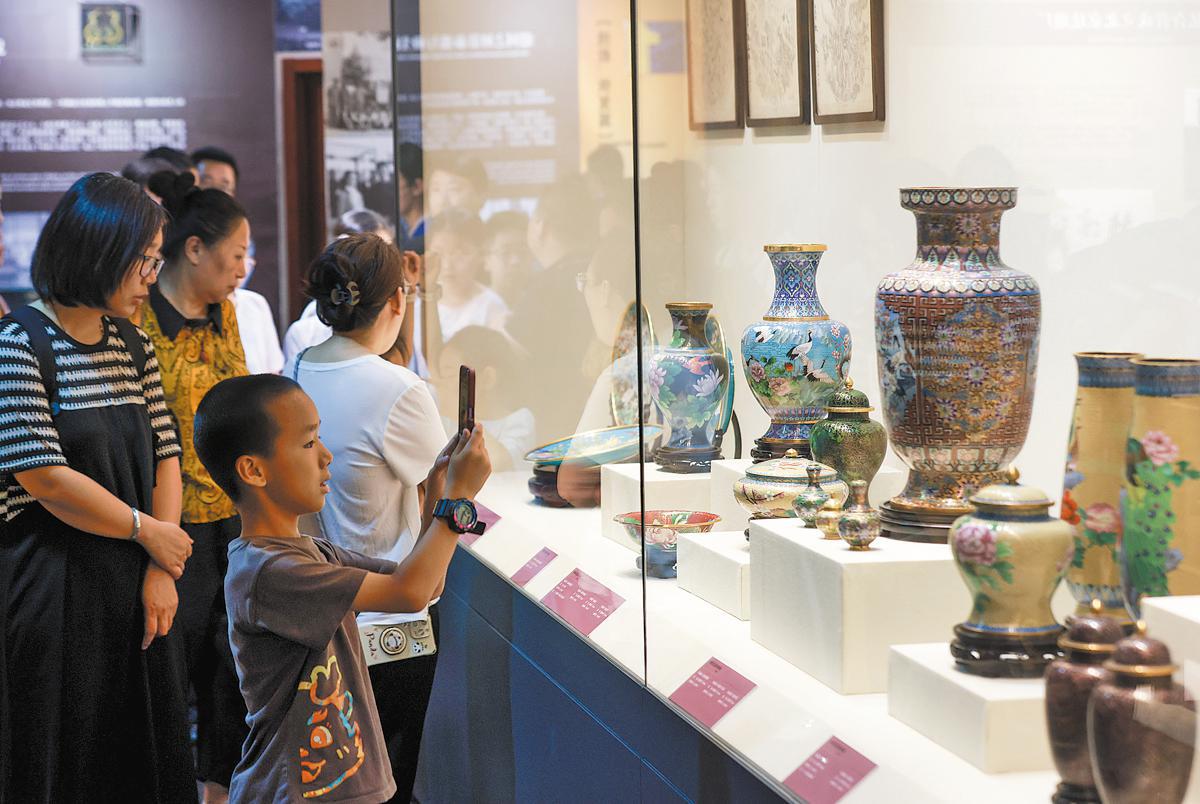Cloisonne shines again as old crafts regain luster


Bent over a luminous vase of pink peonies, a young craftsman guided his enameling tool in patient, practiced circles at a factory in central Beijing, breathing new life into China's cloisonne tradition.
At Beijing Enamel Factory, cloisonne, which was more broadly used in jewelry and metalware in the ancient royal court, now quietly evolves through the hands of young craftsmen.
"Cloisonne has always been about adaptation," said Zhong Liansheng, chief craft artist at the factory. Born in 1962, Zhong has watched this transformation unfold before his eyes.
Cloisonne stands out as a vivid fusion of timeless artistry and contemporary appeal, according to the master.
With ingenious designs, superb craftsmanship and auspicious symbolism, cloisonne artworks bridge traditional and modern aesthetics, gaining popularity among consumers both at home and abroad. In recent years, cloisonne pieces have often been presented by China as national gifts at major diplomatic events.
This growing appeal also reflects a broader revival of traditional crafts across China, backed by government support and a new generation eager to embrace their cultural heritage.
"At the core of cloisonne's mystique is its exquisite delicacy, achieved through countless steps that demand absolute precision at every turn," Zhong said, adding that each object — be it a gleaming dome or a small jewelry box — undergoes multiple laborious steps.
Cloisonne begins with shaping a copper body, then bending fine wires into intricate patterns affixed to the surface. The piece is fired to fuse the filigree, then filled with enamel made from mineral powders. After repeated firing, polishing and gilding, the result is a luminous work of precision and color. "This work is truly the perfect embodiment of craftsmanship," Zhong said. Yet for him, honoring the past is not enough.
"Don't just copy the old styles," he said, adding that these ancient arts will only endure if they find a place in people's everyday lives.
In recent years, Beijing Enamel Factory has applied cloisonne techniques to architectural decor, from upscale interior design elements to public art installations. "We have to create masterpieces that carry our era's aesthetics," Zhong said, highlighting the importance of keeping cloisonne alive as a dynamic art form rather than a static relic.
























